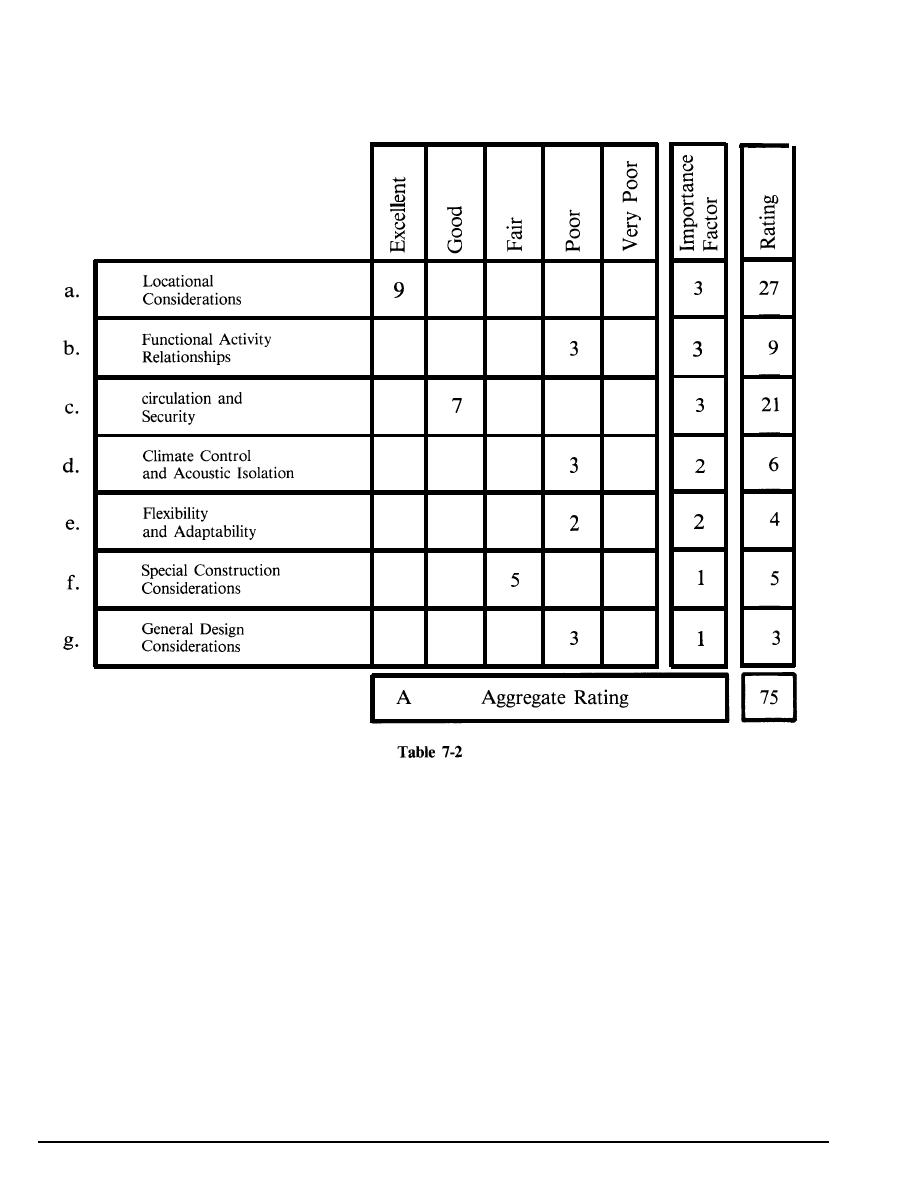
DG 1110-3-106
Characteristics
of Conformity
Functional Indicator
Example Rating of Existing Operations.
scale upgrade in terms of space and staff requirements.
terms of the scope, complexity, and sophistication of
These costs are related to the gross area requirements
upgrading requirements, including long-term and site
for totally rehabilitated or converted facilities. The
improvements. Where the total project requirements
three points shown on the graph represent four
estimate shows the need for expenditures above 50
example designs in Chapter 6. Space needs for each
percent of the cost of new construction, the feasibility
example are based on the requirements for a full range
of providing totally new facilities should be studied.
of functional activities provided within optimum
Such studies should compare the anticipated short-, or
physical relationships. By using a factor of 50 percent
intermediate- and long-term building and site
for allowable upgrading costs, one can predict both
upgrading costs. They should also compare the
the feasibility of individual upgrading projects, and the
maintenance and operating cost of using existing
possibility or desirability that new construction will be
facilities with the construction, maintenance, and
an acceptable upgrade option. The reverse of this type
operating costs of new construction.
of analysis might help the using service determine the
size and scope of activities that could be reasonably
(1) Feasibility of Large-Scale Upgrading.
Table 7-4 compares upgrading costs to new
allowed for by existing space. Normally, it will be
helpful; however, the structure of some service schools
construction costs to illustrate the feasibility of large-
7-4


 Previous Page
Previous Page
